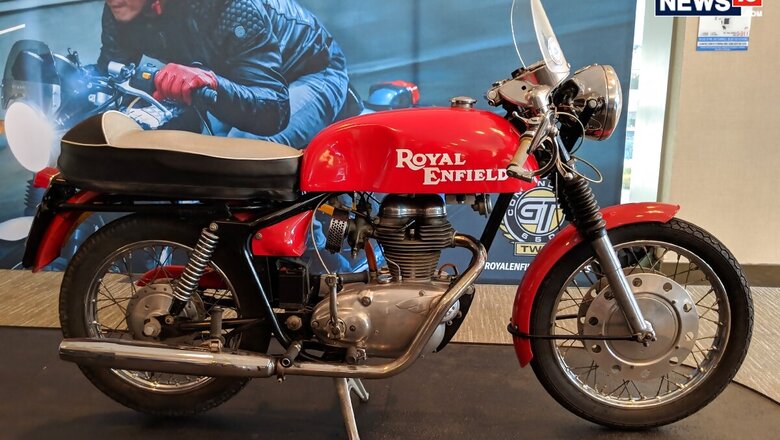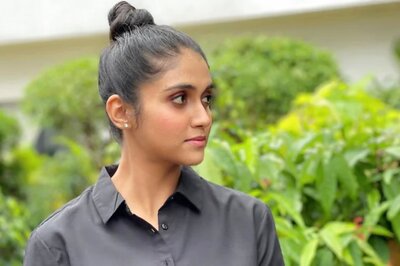
views
Recently, Honda teased out a motorcycle that is set to be launched later this month and it had a lot of people speculating that it could be a “Cafe Racer” among some other things, as is the case with speculations usually. What it will be is something we will find out in due time anyway but this gives us a good opportunity to talk about what exactly is a café racer in the first place given that this trend is making a comeback and several automakers are toying with the idea of having one in their fleet.
The term Café Racer was originally meant to describe a certain kind of motorcyclists in a derogatory manner.
This takes us back to 1973 when Wallace Wyss, popularly known for his historical works on Shelby Mustangs, wrote in Popular Mechanics about how to install a race fairing on street bikes of the era. As per a report by Revzilla, in the opening paragraph, Wyss spoke about how the term “cafe racer” had originated as a derogatory term among the motorcycle racing community in the 1950s.
“It referred to the motorcyclist who played at being an Isle of Man road racer, someone who owned a racy machine but merely parked it near his table at the local cafe,” Wyss wrote.
You see, the term has a British origin and goes back to 1960s, to London, specifically. At that point in time, bikes were used short and quick rides between cafes. During this time, the perception of motorcyclists was undergoing a change as having a motorcycle no longer meant an inability to afford a car as by the late 1950s, an average Briton could afford one. The motorcycles instead were seen as a symbol of rebellion, status and speed and went hand-in-hand with the Rock n’ Roll era.
In short, the origin of “Café Racer” took place as people started racing between Cafes and in order to get better at it, the owners of these motorcycles started stripping away the unnecessary bits and started modifying their motorcycles in a way that it made those bikes lighter and more agile. That was what the focus was and not outright speed as speed was just a by-product of this approach.
The changes that were made to the motorcycles were in-line with how the GP racing motorcycles of that era looked like.
So the question that now comes is, what makes a Café racer?
Well, you give so many years to a trend and it is bound to have several definitions and Café Racers are no different. But what’s common between several ideations of the term Café Racer is the fact that these motorcycles, as mentioned before, were meant to be quick and agile.
As a result, the changes on the motorcycle included modifying it with lower-set handlebars that stooped downwards and were bolted-on, or as now we call it, “clip-on” handlebars. Riders also would put a cowl on the rear seat for better aerodynamics or simply remove it altogether.
The next step would be to have rear-set footpegs that would allow the rider to “tuck-in” into the motorcycle for better aerodynamics and to help with this, riders also often put a fairing on the motorcycle. And lastly, the fuel tanks would become more rectangular-ish rather than being oval and they had indents into the tanks to let the rider grip the motorcycle with his/her knees.
Other than this, riders would usually strip out all the other unnecessary bits from the motorcycle in order to drop weight – all of which was done in a quest for better times between cafes.
These changes resulted in a kind of motorcycle that looked familiar to one another and eventually, that design came to be known as café racers. Today, a café racer design is arguably one of the most popular forms of modifications done on motorcycles.
A lot of automakers also offer their takes on modern-day café racers in India. This includes the likes of the Triumph Bonneville Thruxton which only recently got discontinued due to the shift to BS-VI emission norms, Royal Enfield Continental GT 650 and there was even one café racer based on the Hero Splendor, known as the Hero Splendor Pro Classic.
While this is only the tip of the iceberg with regards to the history of café racers, what they are and their complete story, the full history behind café racers is something that we recommend all motorcycle enthusiasts to dive into. All in all, there have been several shifts in trends of motorcycles, with the current tides favouring the likes of adventure motorcycles and street-naked motorcycles, the café racers have held a spot of their own come what way and have always remained cool.
Pretty Rock n’ Roll of them, if you ask me.
Read all the Latest News, Breaking News and Coronavirus News here



















Comments
0 comment